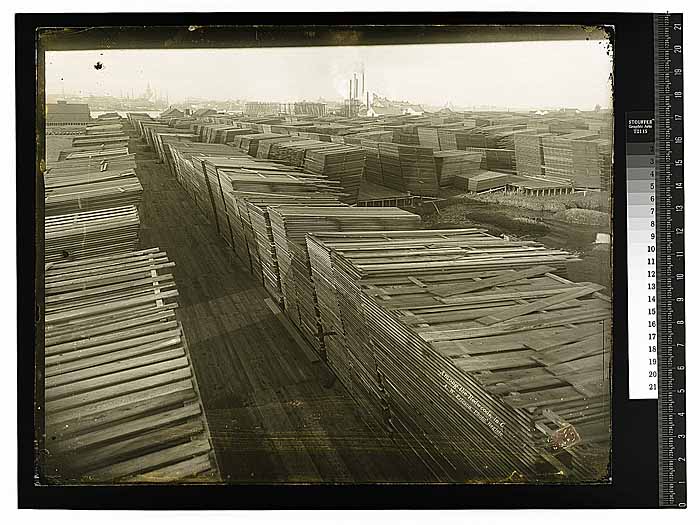|
Wiyot
The Wiyot ( Wiyot: Wíyot, Chetco-Tolowa: Wee-'at xee-she or Wee-yan' Xee-she', Euchre Creek Tututni: Wii-yat-dv-ne – "Mad River People", Yurok: Weyet) are an indigenous people of California living near Humboldt Bay, California and a small surrounding area. They are culturally similar to the Yurok people (Wiyot term: ''Hiktok''). They called themselves simply Ku'wil, meaning "the People". Today, there are approximately 450 Wiyot people. They are enrolled in several federally recognized tribes, such as the Wiyot Tribe (also known as the Table Bluff Reservation—Wiyot Tribe), Bear River Band of the Rohnerville Rancheria, Blue Lake Rancheria, and the Cher-Ae Heights Indian Community of the Trinidad Rancheria.f vigilantesheld a meeting at Eel River and resolved to kill every peaceable Indian – man, woman, and child." The vigilantes were also known as the "Humboldt Volunteers, Second Brigade," reported to have organized at Hydesville, California, Hydesville (the town ca ... [...More Info...] [...Related Items...] OR: [Wikipedia] [Google] [Baidu] |
Wiyot Language
Wiyot (also Wishosk) or (lit. 'your jaw') is an Algic languageCampbell, Lyle (1997), p. 152 spoken by the Wiyot people of Humboldt Bay, California. The language's last native speaker, Della Prince, died in 1962. Classification Wiyot, along with its geographical neighbor, the Yurok language, were first identified as relatives of the Algonquian languages by Edward Sapir in 1913, though this classification was disputed for decades in what came to be known as the Ritwan controversy. Due to the enormous geographical separation of Wiyot and Yurok from all other Algonquian languages, the validity of their genetic link was hotly contested by leading Americanist linguists; as Ives Goddard put it, the issue "has profound implications for the prehistory of North America". However, by the 1950s, the genetic relationship between the Algonquian languages and Wiyot and Yurok had been established to the satisfaction of most, if not all, researchers, giving rise to the term ''Algic' ... [...More Info...] [...Related Items...] OR: [Wikipedia] [Google] [Baidu] |
Table Bluff Reservation—Wiyot Tribe
The Wiyot Tribe, California is a federally recognized tribe of Wiyot people. They are the aboriginal people of Humboldt Bay, Mad River and lower Eel River of California. ''Four Directions Institute.'' Retrieved 29 Sept 2013."The Wiyot Tribe." ''Humboldt State University.'' Retrieved 29 Sept 2013. Other are enrolled in the Blue Lake Rancheria, Rohnerville Rancheria and Trinidad Rancheria [...More Info...] [...Related Items...] OR: [Wikipedia] [Google] [Baidu] |
Humboldt Bay
Humboldt Bay (Wiyot language, Wiyot: ''Wigi'') is a natural bay and a multi-basin, bar-built coastal lagoon located on the rugged North Coast (California), North Coast of California, entirely within Humboldt County, California, Humboldt County, United States. It is the largest protected body of water on the West Coast of the United States, West Coast between San Francisco Bay and Puget Sound, the second-largest enclosed bay in California, and the largest port between San Francisco and Coos Bay, Oregon. The largest city adjoining the bay is Eureka, California, Eureka, the regional center and county seat of Humboldt County, followed by the city of Arcata, California, Arcata. These primary cities, together with adjoining unincorporated communities and several small towns, comprise a Humboldt Bay Area with a total population of nearly 80,000 people. This comprises nearly 60% of the population of Humboldt County. The bay is home to more than 100 plant species, 300 invertebrate species, ... [...More Info...] [...Related Items...] OR: [Wikipedia] [Google] [Baidu] |
Eureka, California
Eureka ( ; Wiyot: ; Hupa: ; ) is a city and the county seat of Humboldt County, located on the North Coast of California. The city is located on U.S. Route 101 on the shores of Humboldt Bay, north of San Francisco and south of the Oregon border. At the 2020 census, the population of the city was 26,512 and the population of the greater Eureka area was 48,119. Eureka is the largest coastal city between San Francisco and Portland, Oregon, and the westernmost city of more than 25,000 residents in the 48 contiguous states.Eureka (city), California , State & County QuickFacts, January 10, 2013, note: in data set The proximity to the sea causes the city to have an extremely maritime climate with very small annual temperatu ... [...More Info...] [...Related Items...] OR: [Wikipedia] [Google] [Baidu] |
Algic Languages
The Algic languages (also Algonquian–Wiyot–Yurok or Algonquian–Ritwan) are an indigenous language family of North America. Most Algic languages belong to the Algonquian subfamily, dispersed over a broad area from the Rocky Mountains to Atlantic Canada. The other Algic languages are the Yurok and Wiyot of northwestern California, which, despite their geographic proximity, are not closely related to each other. All these languages descend from Proto-Algic, a second-order proto-language estimated to have been spoken about 5,000 years ago and reconstructed using the reconstructed Proto-Algonquian language and the Wiyot and Yurok languages. History The term ''Algic'' was first coined by Henry Schoolcraft in his ''Algic Researches'', published in 1839. Schoolcraft defined the term as "derived from the words Allegheny and Atlantic, in reference to the indigenous people anciently located in this geographical area." Schoolcraft's terminology was not retained. The peoples h ... [...More Info...] [...Related Items...] OR: [Wikipedia] [Google] [Baidu] |
Bear River Band Of The Rohnerville Rancheria
The Bear River Band of the Rohnerville Rancheria is a federally recognized tribe of Mattole, Bear River and Wiyot people in Humboldt County, California. Government The Bear River Band is headquartered in Loleta, California. Tribal enrollment is based on residency on the Rohnerville Rancheria from 1910 to 1960 or being a lineal descent of those residents. Reservation and traditional territories The Rohnerville Rancheria is a federally recognized ranchería located in two separate parts. One () is at the eastern edge of Fortuna, and the other () to the southeast of Loleta, both in Humboldt County. As of the 2010 Census the population was 38. The tribe's traditional territory was along the Mattole and Bear Rivers near Cape Mendocino Cape Mendocino ( Spanish: ''Cabo Mendocino'', meaning "Cape of Mendoza"), which is located approximately north of San Francisco, is located on the Lost Coast entirely within Humboldt County, California, United States. At 124° 24' 34" W lon ... [...More Info...] [...Related Items...] OR: [Wikipedia] [Google] [Baidu] |
Yurok People
The Yurok people are an Algic-speaking Indigenous people of California that has existed along the or "Health-kick-wer-roy" (now known as the Klamath River) and on the Pacific coast, from Trinidad south of the Klamath’s mouth almost to Crescent City along the north coast. The people of the Yurok Tribe traditionally identify as , a Yurok word simply meaning "the people." Some historic documents, like the Yurok Tribe's unratified treaty with the Government of the United States (GoUS), refer to the Yurok Tribe as the Lower Klamath, Pulikla, or Poh-lik Indians to distinguish the people of the Yurok Tribe from the "Upper Klamath" or "Peh-tsick" Indians, who are now known as the Karuk Tribe. The name Yurok is derived from the Karuk word , meaning "downriver people; i.e. Yurok Indians".Andrew Garrett, Susan Gehr, Erik Hans Maier, Line Mikkelsen, Crystal Richardson, and Clare Sandy. (November 2, 2021) ''Karuk; To appear in The Languages and Linguistics of Indigenous North America: A ... [...More Info...] [...Related Items...] OR: [Wikipedia] [Google] [Baidu] |
Mad River (California)
The Mad River ( Wiyot: ''Baduwa't'') is a river in upper Northern California. It flows for in a roughly northwest direction through Trinity County and then Humboldt County, draining a watershed into the Pacific Ocean north of the city of Arcata near Arcata–Eureka Airport in McKinleyville. The river's headwaters are in the Coast Range near South Kelsey Ridge. History Before Euro-American settlers arrived in the mid-1800s, the native peoples occupying the lower Mad River watershed were the Wiyot (from approximately Blue Lake to its mouth, plus the greater Humboldt Bay region) who spoke a dialect affiliated with the Algonquian language family, with upriver reaches controlled by three different groups whose languages are related to the Athabascan family, the Whilkut, Nongatl and Lassik (Baumhoff 1958). Today, among these distinct groups, only the Wiyot-affiliated Blue Lake Rancheria and the Wiyot Tribe of the Table Bluff Reservation are federally recognized tribes and th ... [...More Info...] [...Related Items...] OR: [Wikipedia] [Google] [Baidu] |
Indigenous People Of California
Indigenous peoples of California, commonly known as Indigenous Californians or Native Californians, are a diverse group of nations and peoples that are indigenous to the geographic area within the current boundaries of California before and after European colonization. There are currently 109 federally recognized tribes in the state and over forty self-identified tribes or tribal bands that have applied for federal recognition. California has the second-largest Native American population in the United States. Most tribes practiced forest gardening or permaculture and controlled burning to ensure the availability of food and medicinal plants as well as ecosystem balance. Archeological sites indicate human occupation of California for thousands of years. European settlers began exploring their homelands in the late 18th century. This began with the arrival of Spanish soldiers and missionaries who established Franciscan missions that instituted an immense rate of death and ... [...More Info...] [...Related Items...] OR: [Wikipedia] [Google] [Baidu] |
Arcata, California
Arcata (; ; ) is a city adjacent to the Arcata Bay (northern) portion of Humboldt Bay (United States), Humboldt Bay in Humboldt County, California, United States. At the 2010 United States Census, 2020 census, Arcata's population was 18,857. Arcata was first founded in 1850 as Union, was officially established in 1858, and was renamed Arcata in 1860. It is located north of San Francisco (via U.S. Route 101 in California, Highway 101), and is home to California State Polytechnic University, Humboldt. Arcata is also the location of the Arcata Field Office of the Federal Bureau of Land Management, which is responsible for the administration of natural resources, lands and mineral programs, including the Headwaters Forest, on approximately of public land in Northwestern California. History Indigenous Native American The Wiyot people and Yurok tribe, Yurok people inhabited this area prior to the arrival of Europeans and continue to live in the area. "Kori" is the name for the Wiy ... [...More Info...] [...Related Items...] OR: [Wikipedia] [Google] [Baidu] |







